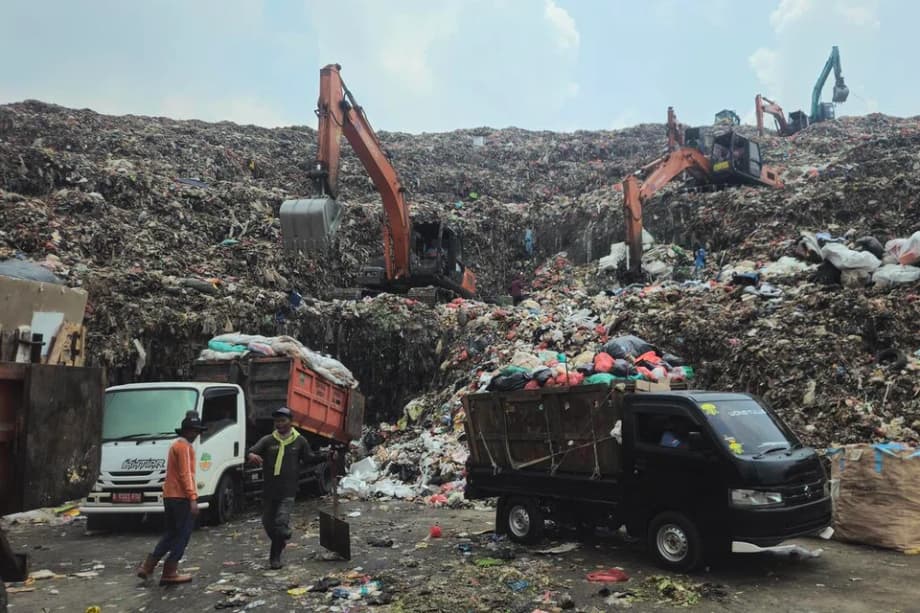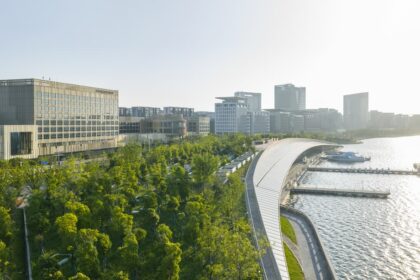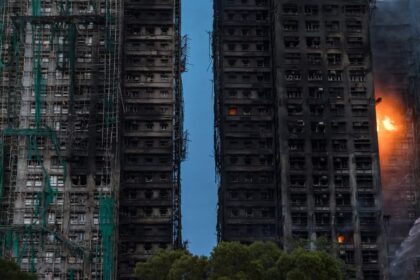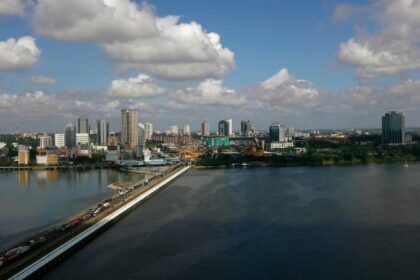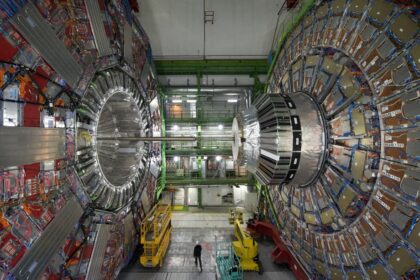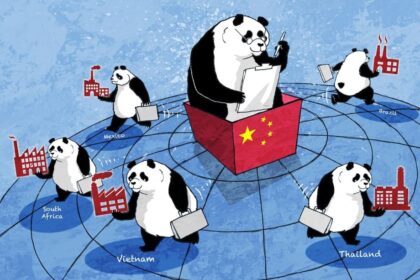A landfill crisis and a power opportunity
Indonesia is moving to build dozens of large waste to energy incinerators in a push to ease pressure on overflowing landfills and to produce electricity for growing cities. One early project is planned at Bantar Gebang in Bekasi, the site that has taken most of Jakarta’s trash since 1989. The landfill spans about 110 hectares and is nearing capacity as the capital now generates around 8,000 tonnes of rubbish every day, up sharply from a decade ago. Across the country, daily waste generation runs into the hundreds of thousands of tonnes, a scale that has outpaced local collection, sorting, and disposal systems in many regions.
- A landfill crisis and a power opportunity
- What the government plans to build and where
- How the plants would work and the power they could deliver
- Money, partners and who runs the projects
- Timelines, regulations and policy shifts
- Health and environmental risks and how they are managed
- Community acceptance and lessons from Benowo
- Recycling, waste pickers and a just transition
- Climate and energy context
- Highlights
The government’s plan would install modern plants in at least 30 cities, with some officials outlining a path to 33 or even 34 locations as procurement advances. The plants would burn municipal solid waste to produce steam and spin turbines, feeding power to the grid. Officials say the facilities can cut the amount of trash requiring burial by as much as 90 percent, shrinking landfill footprints and the risks of fires, leachate and disease. The approach has strong supporters and determined critics. Countries in Europe and Northeast Asia have used incineration for years, yet questions persist over health risks from stack emissions, climate benefits, costs, and the effect on recycling and the informal sector that depends on waste.
What the government plans to build and where
Indonesia’s emerging program envisions large complexes that can process roughly 1,000 to 2,000 tonnes of waste per day at each site. One of the first plants is slated for Bantar Gebang, with a nominal capacity of about 1,000 tonnes daily. The only large facility of similar scale currently operating in the country is in East Java, where a plant burns around 1,600 tonnes per day. New projects are in the pipeline for Yogyakarta, Bogor, Semarang, and other urban centers. In some cities, proposals include tandem investments in sorting stations and transfer facilities to move waste to incinerators efficiently.
Budgets are substantial. Each facility is expected to cost in the range of two to three trillion rupiah per plant, equal to roughly S$156 million to S$234 million. The scale reflects the engineering required for high combustion temperatures, emissions controls, ash handling, and grid connections. In Tangerang a project is designed to handle about 2,000 tonnes a day, and in Makassar a 20 MW plant is under preparation. These units are intended to supply steady baseload power for mid sized cities, while sharply reducing the volume of trash that ends up buried. Jakarta’s daily waste stream and the strains at Bantar Gebang illustrate why the government is prioritizing large sites first, then rolling the model into other regions.
How the plants would work and the power they could deliver
Most of the new facilities are expected to use mass burn incineration. Garbage trucks deliver mixed municipal waste to a receiving hall. Cranes feed the waste into a furnace where it is burned on moving grates at high temperature. The heat boils water in a boiler to make steam, which drives a turbine to generate electricity. Flue gases pass through multiple cleaning stages before discharge through the stack, and the remaining ash is captured for disposal or potential reuse after proper treatment. The plants are designed to run continuously, so they function as a steady source of power rather than an intermittent one like wind or solar.
What goes into the furnace and what comes out
Indonesia’s waste stream contains a high share of food scraps with high moisture, along with plastics, paper, textiles, and other materials. Wet waste reduces the energy content, so pre sorting and dewatering steps can help. Most plants aim to reduce incoming volumes by around 80 to 90 percent. The remaining material ends up as bottom ash and fly ash. Bottom ash can sometimes be used in construction after safety tests, while fly ash must be carefully stabilized and sent to secure landfills because it can contain heavy metals and other pollutants captured by the filters. Over time, reliable supply chains for ash handling and reuse can reduce operating costs and environmental risk.
Yuliot Tanjung, Deputy Minister at the Ministry of Energy and Mineral Resources, has outlined how the program could expand and diversify. He has described pathways for both electricity generation and new fuels, depending on the local waste mix and city needs.
“We are drafting a new presidential regulation to provide clearer definitions for waste to energy technologies. The plan is to implement plants in 30 major cities, with 20 MW added to each grid starting in 2029.”
Depending on the city and plant size, a single facility could power tens of thousands of households. Earlier tallies counted 17 proposed waste to energy projects nationwide with combined generation capacity in the range of more than 100 MW. The new wave would be larger. In Bantar Gebang, the initial 1,000 tonne per day unit is a starting point for a bigger complex. The long term aim is to integrate citywide waste collection, sorting lines for recyclables and organics, and energy recovery in one system so fewer trucks head to open dumps.
Money, partners and who runs the projects
Financing will blend public and private sources. The government has signaled that proceeds from patriot bonds, a form of government bond marketed to citizens and institutions, will help cover upfront costs. Indonesia’s sovereign wealth vehicle, Danantara, is tasked with structuring the projects and coordinating across more than 500 regional authorities. Officials say more than one hundred domestic and international firms have expressed interest in taking part through consortia that would design, finance, build, and operate plants under long term agreements.
How the deals are structured
Revenue will come from two main streams. Local governments pay a tipping fee for each tonne of waste delivered, and the state power utility PLN purchases electricity from the plant at a fixed tariff. Indonesia allows full foreign ownership for non hazardous waste management, which can attract technology providers from countries with long track records in incineration. Public private partnerships are expected to be the standard approach so that fiscal pressure is shared and risk is allocated by contract. Developers, lenders, and city governments will focus on core bankability factors: dependable tipping fees written into regional budgets, binding power price agreements with PLN, a clear plan for fly ash and bottom ash, and predictable delivery of municipal waste. The best structured projects publish monitoring data and give communities access to oversight, which reduces disputes and delays.
Timelines, regulations and policy shifts
Senior officials have set an ambitious schedule. A presidential regulation issued in 2025 on urban waste management broadens the scope of waste to energy, allowing cities to convert waste not just into electricity but, where feasible, into synthetic fuels and other usable products. Authorities are targeting completion of plants in about 33 cities by the end of 2027, with an initial batch of projects launching in late 2025 across ten locations. Policymakers are also reviewing tax rules for developers and processing thresholds for larger plants.
At an awards event in Jakarta, Coordinating Minister Zulkifli Hasan underscored the pace of change and signaled the president’s backing for faster deployment.
“President Prabowo Subianto has approved accelerating waste management in urban areas using eco friendly technology.”
The program must operate within Indonesia’s highly decentralized waste system, where hundreds of districts and cities manage collection and disposal. That fragmentation has hindered consistent standards for sorting, landfill operations, and fees. A national framework that sets procurement templates, performance benchmarks, and emissions reporting rules can help regional governments move from concept to construction without years of delay. Alignment with PLN’s grid planning and local public works budgets is just as important to keep schedules on track.
Health and environmental risks and how they are managed
Communities near large landfills often live with smoke, odors and water pollution. Indonesia has suffered deadly and destructive waste site disasters, including a catastrophic landslide at Leuwigajah in 2005 and a major blaze at Sarimukti in 2023. Residents near Bantar Gebang have long reported foul smells and contaminated groundwater, and rates of respiratory illness are a persistent worry. Moving waste from open dumps to controlled combustion can reduce fires and methane leaks, but incinerators bring their own risks if design and oversight are weak.
Modern plants are engineered to limit harmful emissions. High temperatures and adequate residence time in the furnace promote complete combustion. Multi stage flue gas treatment uses baghouse filters to trap particulate matter, scrubbers to neutralize acid gases, and activated carbon to capture dioxins, furans, and mercury. Continuous emissions monitoring systems can stream data to regulators and make results visible to the public. Strict maintenance schedules and emergency shutdown procedures are essential. These safeguards work when technology is properly installed and operated. Where monitoring is sporadic or standards are vague, communities have reason to worry. Some European countries are debating carbon taxes on incinerators and the European Union no longer treats incineration as a green or renewable source, which highlights the need for careful climate accounting and transparent reporting in Indonesia as new plants come online.
Community acceptance and lessons from Benowo
Experience from Surabaya’s Benowo facility points to how social acceptance can be won and kept. Early opposition in nearby neighborhoods focused on potential impacts on livelihoods and daily life. Operators and city officials built support by opening regular communication channels, setting up a compensation system, creating local jobs, and improving nearby roads and public amenities. Residents have reported cleaner surroundings and fewer pests, even as occasional odors and leachate episodes still require attention. The lesson is straightforward: communities respond to visible improvements, honest engagement, and remedies when problems occur.
New projects can build on those practices. Clear information on plant operations, open days for local residents, and real time publishing of emissions data can reduce anxiety. Community oversight panels give neighbors a voice and help resolve disputes before they escalate. Social programs that include training, healthcare, and scholarships can share benefits more widely. Without those measures, even technically sound projects can stall.
Recycling, waste pickers and a just transition
Indonesia’s informal waste economy sustains tens of thousands of people who collect and sort recyclables at landfills and neighborhood depots. A rapid shift to large, centralized incinerators could disrupt their livelihoods if recyclables are pulled directly from mixed waste streams and burned. Advocates warn that plants with long term supply contracts may press cities to feed them more waste, including plastics that could be recycled. That dynamic can weaken recycling goals if procurement rules are not carefully written.
Policy design can avoid that trap. Cities can adopt a waste hierarchy that prioritizes waste reduction, reuse, and recycling, with energy recovery as a last step for residuals that cannot be economically recycled or composted. Contracts can include minimum recycling and organics diversion targets, and plants can be prohibited from demanding quality or volume guarantees that undermine those targets. Sorting hubs and material recovery facilities should be funded alongside incinerators. Scavengers and waste pickers can be brought into the system as contracted sorters, safety trained employees, or members of cooperatives that supply clean recyclables. Health insurance, protective gear, and consistent pay can make this shift an upgrade rather than a loss for those who currently rely on landfill work. Communities near Bantar Gebang have asked to be part of the new waste management model, and a fair transition plan will be essential as construction begins.
Climate and energy context
Waste to energy is not a silver bullet for Indonesia’s climate challenge, yet it can help if implemented with strict safeguards. Food waste dominates the nation’s trash by weight, and methane from decomposing organics is a potent greenhouse gas. Researchers estimate that methane accounts for the great majority of emissions from the country’s food supply chain. Life cycle assessments indicate that moving municipal waste from open dumping and conventional landfills into modern incinerators can cut net greenhouse gas emissions compared with the status quo, provided plants meet strict pollution control standards and cities still pursue ambitious recycling and composting. One recent analysis of Java’s capitals found potential emissions reductions on the order of around 40 percent when incineration replaces unmanaged landfilling. The same study put the levelized cost of electricity from incineration near 0.044 US dollars per kWh, roughly aligned with current national prices. In 2025, electricity output from incineration in those cities alone could exceed two million megawatt hours per year given sufficient plant capacity and waste supply.
How much can WTE cut emissions
The climate math is complex. Burning plastics releases carbon dioxide from fossil carbon. Burning organics avoids methane that would have formed in landfills, which has a higher warming impact than carbon dioxide over a few decades. Results depend on the details of collection, sorting, combustion efficiency, and what power sources are displaced on the grid. In Europe, policymakers have become more skeptical of climate gains from incineration, and some countries are moving to charge carbon taxes on incinerator stacks. That debate is relevant for Indonesia. The national power mix still relies heavily on coal, so the avoided emissions per unit of electricity from waste could be higher than in cleaner grids. Yet any increase in plastic burning to boost energy yield would undercut recycling efforts and raise emissions. The best outcomes come when cities recover organics for composting or anaerobic digestion, maintain strong recycling programs, and send only the residual fraction to incinerators with top tier emissions controls.
Policy shifts could influence financing. Indonesia has reopened channels for international carbon trading under a new decree, aiming to attract investment into projects that verifiably reduce emissions. Methane mitigation from waste is a major target for climate action worldwide. Whether and how waste to energy plants can participate in such markets will depend on national rules and international standards, which currently treat incineration cautiously. Clear reporting, independent verification, and alignment with a broader waste reduction strategy would be necessary for any credibility.
Highlights
- Indonesia plans large waste to energy plants in at least 30 cities, with officials targeting around 33 sites by 2027 and an initial rollout in 10 cities from late 2025.
- A first 1,000 tonne per day facility is slated for Bantar Gebang near Jakarta, where the 110 hectare landfill is nearing capacity after decades of use.
- Each plant is expected to cost two to three trillion rupiah, funded through patriot bonds and public private partnerships, with Danantara coordinating projects and PLN buying the power.
- Plants aim to cut landfill needs by up to 90 percent and deliver steady electricity, with some plans calling for 20 MW per city and additional fuel production in select sites.
- New rules issued in 2025 expand the scope of waste to energy, and ministers say the president has endorsed faster deployment of eco friendly waste management in urban areas.
- Health and environmental risks center on stack emissions and ash management, which require high grade filters, continuous monitoring, and transparent reporting.
- Community engagement at Surabaya’s Benowo plant suggests acceptance improves with steady communication, compensation systems, and local job creation.
- Experts caution that incineration should not undermine recycling or harm the informal sector. Contracts can mandate recycling and organics diversion alongside energy recovery.
- Studies of Java’s cities suggest incineration can reduce greenhouse gas emissions compared with unmanaged landfilling and can deliver electricity at competitive costs.
- Indonesia’s power system still leans on coal, so waste to energy will be a modest but useful piece of a larger transition if it is paired with strong recycling and emissions safeguards.


